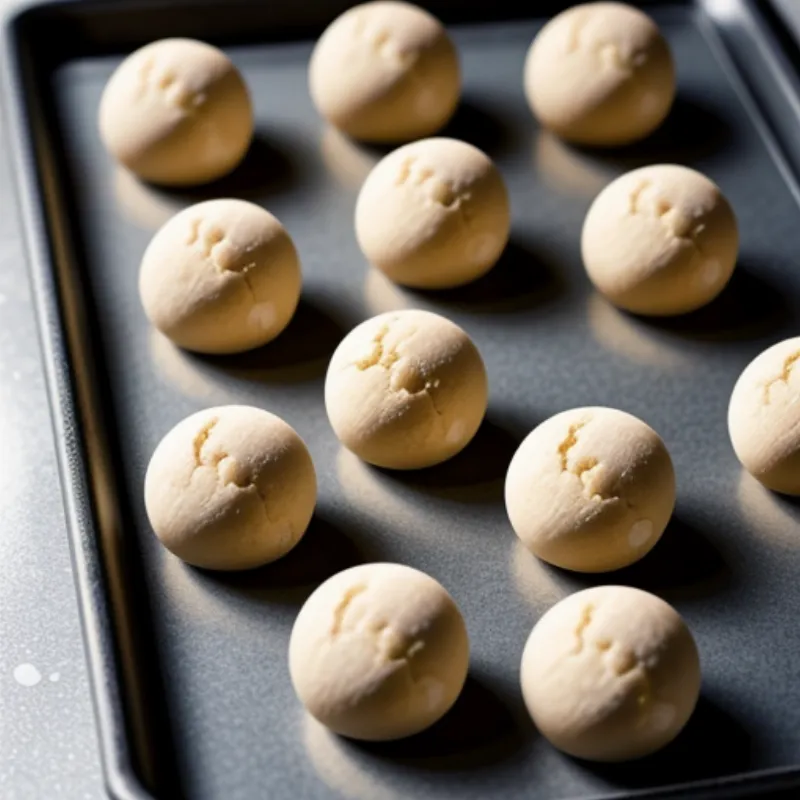Asiatic cookies, a delightful treat with roots across diverse Asian cultures, offer a symphony of flavors and textures. From the delicate crunch of a Chinese almond cookie to the melt-in-your-mouth goodness of a Vietnamese mooncake, these cookies are sure to tantalize your taste buds and transport you to the heart of Asia.
Join me as we embark on a culinary adventure to explore the art of making these exquisite cookies in your own kitchen. Whether you’re a seasoned baker or a novice looking to expand your repertoire, this guide provides a step-by-step approach to creating these delectable treats.
Unveiling the Flavors: A Glimpse into Asiatic Cookie Varieties
Before we delve into the recipe, let’s uncover the diversity of Asiatic cookies:
- Chinese Almond Cookies: These iconic cookies boast a delicate almond flavor and a signature crackled surface.
- Vietnamese Mooncakes: Celebrated during the Mid-Autumn Festival, mooncakes are filled with sweet bean paste and often feature a salted egg yolk symbolizing the full moon.
- Japanese Matcha Cookies: Matcha, a finely ground green tea powder, lends its vibrant color and unique earthy flavor to these cookies.
- Korean Dasik Cookies: Made with rice flour and nuts, dasik cookies are known for their elegant designs and delicate sweetness.
This list barely scratches the surface of the vast world of Asiatic cookies. Each country and region boasts its unique variations, ingredients, and cultural significance.
Recreating the Magic: A Step-by-Step Guide to Asiatic Cookies
This recipe focuses on a classic Chinese Almond Cookie, but feel free to adapt the techniques and explore different flavor profiles as you gain confidence.
Ingredients:
- 1 cup (2 sticks) unsalted butter, softened
- 1/2 cup granulated sugar
- 1 large egg yolk
- 1 teaspoon almond extract
- 2 cups all-purpose flour
- 1/4 cup almond flour
- 1/4 teaspoon salt
- Whole almonds, for garnish
Equipment:
- Baking sheets
- Parchment paper
- Mixing bowls
- Electric mixer
- Measuring cups and spoons
- Spatula
Instructions:
-
Cream the Butter and Sugar: In a large bowl, cream together the softened butter and granulated sugar until light and fluffy.
- Tip: Ensure your butter is at room temperature for easy creaming.
-
Incorporate the Egg Yolk and Extract: Beat in the egg yolk and almond extract until well combined.
-
Combine Dry Ingredients: In a separate bowl, whisk together the all-purpose flour, almond flour, and salt.
-
Gradual Incorporation: Gradually add the dry ingredients to the wet ingredients, mixing until just combined. Avoid overmixing, as it can lead to tough cookies.
-
Chill the Dough: Shape the dough into a disc, wrap it in plastic wrap, and refrigerate for at least 30 minutes. This allows the dough to firm up and prevents spreading during baking.
 Asiatic cookie dough
Asiatic cookie dough
-
Preheat and Prepare: Preheat oven to 350°F (175°C). Line baking sheets with parchment paper.
-
Shape and Garnish: Roll tablespoonfuls of dough into balls. Place them on the prepared baking sheets, leaving some space between each cookie. Gently press a whole almond into the center of each cookie.
-
Bake to Perfection: Bake for 12-15 minutes, or until the edges of the cookies are lightly golden brown.
-
Cooling and Storage: Let the cookies cool on the baking sheets for a few minutes before transferring them to a wire rack to cool completely. Store in an airtight container at room temperature for up to 3 days.
 Baked Asiatic Cookies
Baked Asiatic Cookies
Troubleshooting Your Asiatic Cookies: FAQs
Q: My cookies spread too much during baking. What went wrong?
A: This usually happens if the dough is too warm or if the butter is over-creamed. Ensure your dough is properly chilled before baking, and avoid overmixing the butter and sugar.
Q: Can I substitute almond flour with another type of flour?
A: While almond flour contributes to the cookies’ texture and flavor, you can experiment with substitutes like cashew flour or finely ground oats. Keep in mind that substitutions might slightly alter the final result.
Q: I don’t have almond extract. What can I use instead?
A: Vanilla extract is a versatile substitute for almond extract. You can also experiment with other extracts like lemon or orange for a citrusy twist.
Conclusion: Enjoy the Fruits of Your Labor
Congratulations on baking your own batch of delicious Asiatic cookies! These treats are perfect for enjoying with a cup of tea, sharing with loved ones, or simply indulging in a moment of sweet satisfaction. Remember, baking is a journey of exploration and creativity. Don’t hesitate to experiment with different flavors, ingredients, and decorations to make these cookies your own.
 Enjoying Asiatic Cookies
Enjoying Asiatic Cookies
Do you have any baking tips or stories to share? We’d love to hear from you in the comments below! And don’t forget to check out our other recipes for more culinary inspiration. Happy baking!
